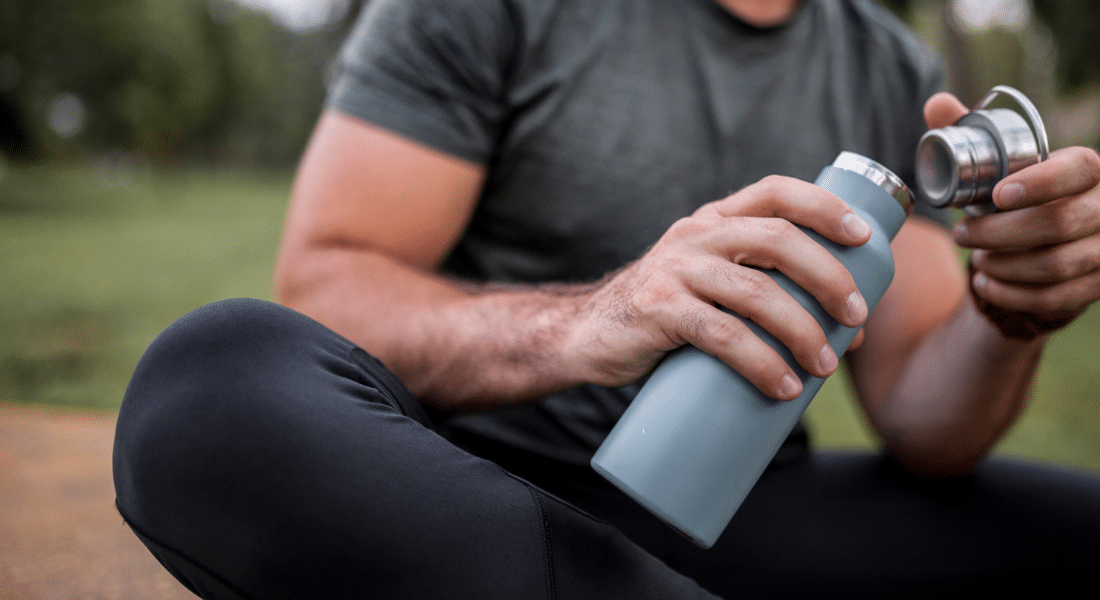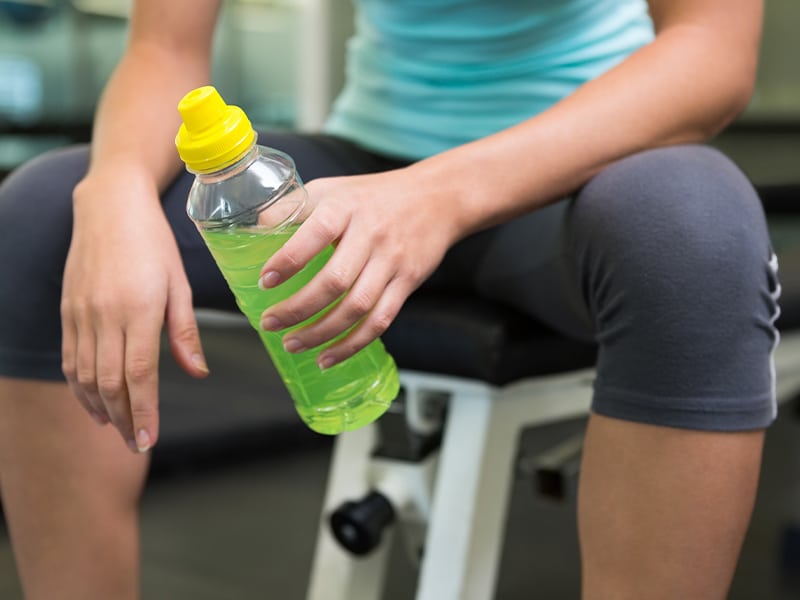This summer is shaping up to be one of the hottest ever. It’s critical to drink enough water, but hydration can take many forms and not all beverages are created equal.
“There’s a lot of tricks out there to help spice up your water, from flavored water to electrolyte water and sparkling water,” says Lisa Maehara, DO, family medicine physician on the medical staff at Methodist Southlake Medical Center.
The most important thing, she says, is to drink enough of it. And while there isn’t a magic amount, despite the age-old advice to drink “eight glasses a day,” she advises men to drink 121 ounces, or almost a gallon a day, and women to drink around 94 ounces.
“It really depends on your metabolic needs,” Dr. Maehara says, “meaning are you exercising, are you outdoors in the hot sun, are you sick, do you have a fever, or are you pregnant? These occurrences can affect how much fluid you need.”
But are some fluids better than others? And how do we meet this goal when most of us only wet our whistles when we’re actually thirsty? Dr. Maehara has some suggestions.
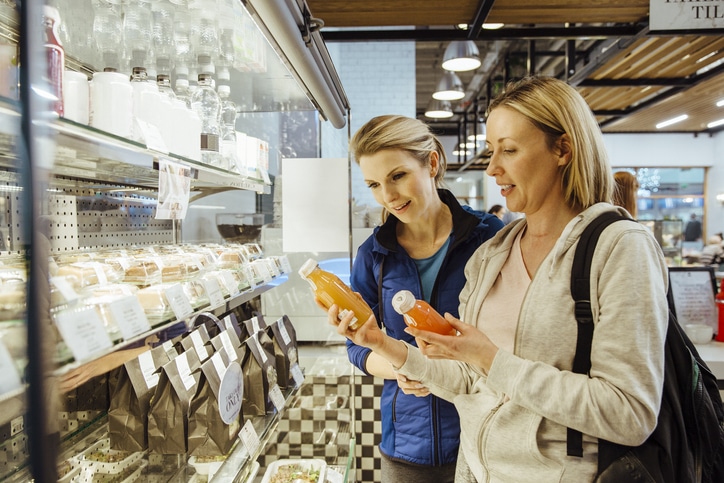
WATER VS. EVERYTHING ELSE
If chugging plain old H20 all day sounds like water torture, don’t despair. Dr. Maehara says it’s OK to mix things up a bit with sparkling water or fruit juices, so long as they don’t contain too much added sugar.
“It doesn’t really matter, as long as you’re drinking enough of it,” she says.
And if you’re working, or playing, outside in the Texas heat, it’s recommended that you drink 8 ounces of water every 15 to 20 minutes.
“When you’re out in the heat, try to drink about 24 to 32 ounces an hour,” Dr. Maehara says, “but no more than 48 ounces of water per hour.”
That’s because the kidneys can only get rid of so much excess water before the blood’s sodium level drops too low, a condition called hyponatremia.
In fact, you may need to replenish more than just water when you’re exercising or working outside in the heat. That’s because sweating excretes salts along with water, and replenishing those minerals with a sports drink may be just what the doctor ordered.
Just don’t confuse sports drinks with energy drinks, which are high in caffeine and sometimes sugary but rarely contain electrolytes.
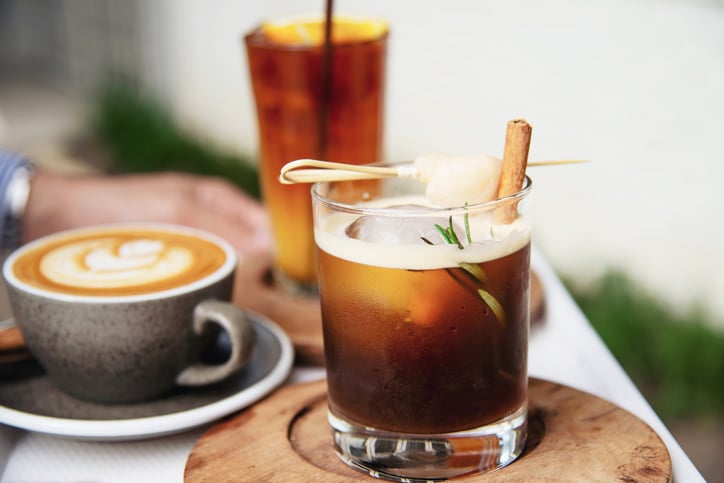
AVOID CAFFEINE AND ALCOHOL
For the same reason, don’t expect a soda to quench your thirst like water can, especially if it’s high in caffeine.
That’s because caffeine is what’s known as a diuretic. In other words, it makes you urinate, just like coffee and tea, and that could lead to dehydration if you overdo it.
Alcohol is also a diuretic, and anyone who’s suffered a hangover is familiar with how parched they feel after a night of drinking. The headache that accompanies binge drinking is also a symptom caused by dehydration.
So when you do drink alcohol, it’s wise to drink more water to compensate for its effects.
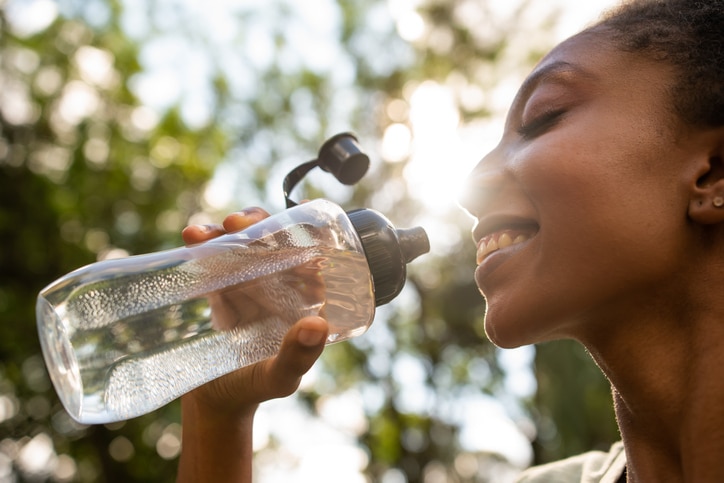
GETTING TO THE BOTTLE OF IT
The hardest part of hydrating may be simply remembering your newfound habit, and what better reminder than having a nice water bottle always close at hand?
“It’s helpful to use a refillable 32-ounce tumbler that’s durable, easy to clean and fits your lifestyle,” Dr. Maehara says. “If you drink just three 32-ounce bottles during your day, you’d have almost reached your daily water intake goal for the day.”
Whether it’s stainless steel, glass, or BPA-free plastic, just fill your container before leaving the house for work and anytime you have access to clean drinking water.
It can also be helpful to set reminders on your phone to make sure you follow through with your hydration goals. Turn your water tracking into a game and aim to beat your previous record.
“There are hydration tracking apps out there that will notify you at intervals of your choice,” Dr. Maehara says. “These reminders will prompt you to pause, take a few sips, and gradually increase your overall water intake.”
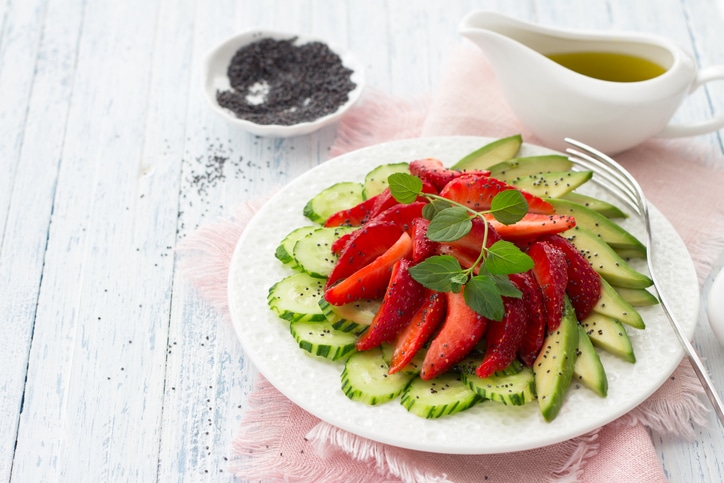
EATING CAN HYDRATE, TOO
Water doesn’t have to come solely from a bottle. What you eat can be every bit as important to staying hydrated. Even better if you can remember to pair each meal with a glass of water.
“Not only will this help you reach your water intake goals,” Dr. Maehara says, “but it will contribute to portion control and aid digestion.”
Many fruits and vegetables are mostly water and can contribute to your daily hydration goals. From watermelon (92% water) to lettuce (96%), you can snack on these hydrating foods throughout the day. Use them to to supplement your water intake.
Tomatoes are also high in water content (nearly 95%), and even better yet, this juicy fruit is highly nutritious. Tomatoes contain vitamins A and C, potassium, and plenty of lycopene, which has cancer-fighting properties.
And if you really want to beat the heat, resolve to be cool as cucumbers, which are 96% water and also contain potassium and fisetin, an anti-inflammatory that has brain-boosting properties.
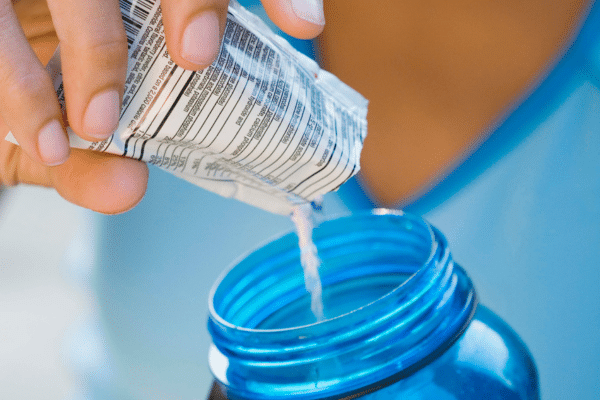
ADD FLAVOR AND MINERALS
Adding fruits and veggies to your diet is always a good idea, but you should also try infusing water with them. Not only will they improve its taste, but they also add essential nutrients.
There are also hydration packets packed with calcium, chloride, magnesium, phosphate, potassium, and sodium — electrolytes that are critical in maintaining bodily functions.
“Many low-calorie flavored water packets are made with natural ingredients containing real fruit extracts, natural sweeteners like stevia, and essential vitamins,” Dr. Maehara says. “These packets prioritize natural ingredients that we can add to a glass of water.”

